Providing enough protein for your chickens is essential for their proper growth, development, and egg-laying ability. However, it can be tricky to know exactly how much they need, when they need it and how to give it to them!
In this article, we’re going to break it all down into simple steps. We’ll tackle each phase of life that requires a boost of protein so that you know exactly what to look for. Lastly, we’ll discuss 5 excellent protein sources that you can utilize to give your chickens what they need, when they need it.
Let’s jump in!
*Disclosure: This post may contain affiliate links to products (including Amazon). I’ll earn a small commission if you make a purchase through my link, at no additional cost to you! Regardless, I only link to products that I personally use on our homestead or believe in.
The Role of Protein in Chickens
Protein is an essential macronutrient for all animals, including chickens! Adequate protein ensures proper growth, development, and good egg production.
A protein-deficient diet can result in:
- Feather abnormalities
- Overeating (resulting in obesity)
- Stunted growth
- Feather picking
- Decline in egg production
- Reduced hatchability of eggs.
When Do Chickens Need More Protein?
Protein requirements fluctuate throughout a chicken’s life cycle and different parts of the year. It’s important to be in tune with your flock to ensure you provide what they need at the right time.
Growth
Baby chicks are rapidly growing and require higher amounts of protein (18-20%) until they reach 8 weeks old. Look for “starter” blends of chick feed as they tend to have higher levels of protein.
Plus, we’ll be chatting about some other sources of protein in a few minutes! This can be especially helpful if you can’t source a chick feed that provides enough protein. However, keep in mind that baby chicks need very small particles, so not all of the options listed are appropriate for baby chicks.
Once they are 8 weeks old, it’s best to drop the protein a bit to 14-16% so that they can continue to fill out, without gaining too much excess weight. Most “grower” blends provide this level of protein. If you can only find chick starter, you can mix in some oats to drop the protein percentage.
*To learn more about raising baby chicks, check out my article Raising Baby Chicks – A Beginner’s Guide!
Laying
Once your pullets reach laying age (usually 18-24 weeks, depending on the breed), it’s time to up the protein again! Laying hens will need 16-18% protein to support the extra demand of producing eggs. If your layer rations don’t provide enough protein, you’ll definitely want to consider extra sources of protein (more on this later!).
What about roosters? Roosters have much lower protein needs (only 9% in their feed) because they aren’t laying eggs. So, if you have roosters, it’s definitely best to provide supplemental protein to just the birds who really need it vs increasing protein in your feed blend for the entire flock.
However, sometimes this can be a bit complicated to try to feed different flock members different types of feed. Personally, I only keep my roosters around for 1-2 years (at most), so I just keep everyone on layer feed for simplicity. If you plan to keep a rooster for its entire lifetime, then I would consider it!
Molting
Molting is a normal process where chickens shed and regrow a new set of shiny, warm feathers to prepare for the upcoming winter. Decreasing daylight hours in late summer is what signals the molt to begin. Most of my chickens start to molt in September, but some start as early as August!
Molting is a gradual process that starts with the head and neck, followed by their body and ends at their tail. The molt typically lasts 14-16 weeks, however, it can vary considerably.
- Good layers will molt late and fast (2-3 months), looking quite ragged and bare.
- Poor layers will molt early and slow (up to 6 months) and you might not notice any feather loss since they only lose a few feathers at a time.
Because feathers are made up of 85% protein, your molting chickens are going to need a boost in protein during this phase of intense feather growth. There’s no need to switch to a different type of feed, but it is important to provide additional protein sources, which we’ll discuss in the next section!
Summer
Hens eat less feed in the summer than they do in the winter because they need less calories to stay warm. When it’s really warm out (90+ degrees), their appetite also plummets (just like with humans!). Because of this, their total protein intake from feed is naturally going to be lower in the summer months.
Therefore, supplementing their layer rations with some nutrient-rich protein sources is essential to keep them well-nourished and laying well during the summer.
Winter
The cold, short months of winter is another essential time for more protein. Overall, chickens need more nutrients to keep their metabolism up and fat layer adequate so that they stay warm when the temps drop below freezing. Make sure your coop is winterized properly as well!
The other challenge that winter brings is that the daylight hours are shorter, which means there are less hours in the day to eat and get those nutrients in. Using a light in your coop helps expand the daylight hours, but light also promotes laying (hens need 14 hours of daylight to keep laying).
If your hens are laying in winter, they’ll need more protein to support egg production, on top of their need to stay warm. Important: if you notice that your hens are losing weight in the winter, turn off the coop light and give them a break.
If you’ve been water glassing your eggs during summer, there’s no need for winter eggs anyway! I personally like to give my hens a break during the winter and then turn on the coop light in January to get the engines going again for the breeding season. It’s a happy medium that’s been working well for us!
Stress
Lastly, stress also increases the protein requirements of your chickens. Stress can include anything from illness and predators to new flock members or moving to a new coop. When there’s been a disturbance in your flock, provide some extra protein to ensure that they have everything that they need to recover.
How Much Protein Should My Chickens have?
As we discussed above, protein needs vary quite a bit throughout a chicken’s life cycle and during different times of the year. Protein needs can range from as low as 9% for adult roosters to as high as 20% during molting or breeding.
Unfortunately, you may only have a couple of feed options available to you, making it hard to customize what you’re providing to your flock. That’s where utilizing supplemental protein sources during these times of higher need is very useful!
I like to keep my adult flock on a general blend of 17% protein, but then supplement with additional protein using the sources below during the yearly molt, cold nights, breeding season, etc.
5 Protein Sources for Chickens (Especially While Molting!)
Alright, we’ve made it to the fun part! Here are 5 excellent protein sources to use in your flock to support them during times of stress, fast growth, poor weather, you name it! While there are a lot of protein sources out there, I like to utilize ones that chickens would naturally seek out in the wild.
Of note, seeds are “technically” a high-protein food, however, they are no higher than your typical layer feed so they won’t actually increase your flock’s protein intake above baseline. Sunflower seeds, for example, only provide 16% protein.
#1 Black Soldier Fly Larvae
This is my favorite high-protein source for my chickens! The protein content is 40%, so a little bit goes a long way. Store the bag in a cold, dry location for up to 12 months! No refrigeration is needed.
Move over mealworms! These have 75x more calcium – excellent to support strong eggshells! The other thing I learned while doing my research is that nearly 100% of dried mealworms on the market are sourced from China. Eaton black soldier fly larvae are raised in the USA – A win in my book!
The Homesteading RD's Product Picks | |
Sustainably sourced from the USA! Wahoo! These provide 40% protein and contain 50x more calcium than mealworms! 1 pound of grubs harvested = 10 pounds of food waste saved from landfills and recycled. | |
How to use: Sprinkle a small handful on the ground for your chickens to scratch for. Don’t mix these into their feed. Not appropriate for baby chicks unless you grind the larvae into small pieces and provide supplemental grit.
#2 Dried Mealworms
Dried mealworms are the best source when it comes to protein supplementation at a whopping 50%! Because the protein content is so high, definitely don’t go too crazy when throwing these out for your flock.
As I mentioned above, nearly 100% of dried mealworms on the market are sourced from China. I searched high and low for one that was sourced from the US and came up empty handed. The product below is sourced from China.
The Homesteading RD's Product Picks | |
These are the highest protein treat out there with a whopping 50% protein! Also a good source of lysine and methionine for egg production. Your chickens will LOVE these! | |
How to use: Sprinkle a small handful on the ground for your chickens to scratch for. Don’t mix these into their feed. Not appropriate for baby chicks unless you grind the mealworms into small pieces and provide supplemental grit.
#3 Meat
Do you see a trend here? Chickens are NOT vegetarians. Chickens are omnivores, through and through. When I see “vegetarian fed” proudly displayed on egg cartons at the grocery store it makes me sad. Watch chickens in a natural setting and you’ll see them frantically going after any carcasses, insects, frogs, mice, you name it!
Meat provides an excellent source of protein in the winter when bugs are scarce. What do you think previous generations fed their flock for protein in the winter? It definitely wasn’t soy!
Chickens are also great at their job as the “clean up crew” – taking any leftovers to produce a no-waste homestead while giving you eggs in return. Chickens are amazing! You can learn more about how to safely feed them meet in my article Do Chickens Eat Meat? Is It Safe?
How to use: Spread out some leftover meat (raw or cooked) and/or bones for your chickens to pick through. Since meat can rapidly rot while sitting out, only provide the amount that they will eat in 1 sitting. Lastly, don’t feed them processed meats (hot dogs, sausages, bacon, deep fried chicken, etc.).
#4 Scrambled Eggs
Providing eggs to your chickens might seem weird, but they really do love them! Plus, they are a great source of protein at 40% and offer a great solution if you need a quick option. No need to go to the store, just grab a few eggs from the laying box.
The key is to provide eggs to your flock without them knowing what they are actually eating. Once they discover that those nuggets that they lay for you daily are a delicious treat… then it’s all over. Once your flock begins egg-eating, it’s nearly impossible to stop.
To prevent this from happening, I recommend only providing eggs in the form of scrambled eggs. Never raw and straight from the shell or as a whole hard-boiled egg. Don’t salt the eggs either!
How to use: Scramble some eggs, break them into small pieces and provide them to your flock on a paper plate or dish. Make sure not to salt the eggs (salt can be toxic to chickens)! This is one of the few treats that are appropriate for baby chicks, in small amounts.
#5 High-Quality Cat Food
Believe it or not, high-quality, grain-free cat food can work as a high-protein supplement for your chooks! It’s best to choose a blend that does not contain chicken because feeding an animal meat from the same species can spread disease.
Of note, dog food is not recommended as a protein source since it is lower in protein and often supplemented with grain-based protein.
The Homesteading RD's Product Picks | |
An excellent, grain-free option that includes salmon, fish meal, peas, herring and potatoes! Packing in a decent amount of protein at 38%. | |
How to use: Sprinkle a handful on the ground for your chickens to scratch for. Don’t mix these into their feed. Not appropriate for baby chicks.
FAQ About Protein Sources for Chickens
Can you feed too much protein to chickens?
Absolutely! While a high protein supplement during times of increased need is great, giving them too much can cause problems. Excess protein can cause ammonia build up in the coop, which can irritate their lungs, eyes, and mucous membranes. Too much protein can also stress their kidneys.
A good rule of thumb is to only provide an amount that your flock is able to finish within a few minutes. Definitely don’t fill a whole feeder with it or mix it into their standard feed.
Plus, protein is expensive! Don’t give your flock more protein than they really need and your wallet will thank you.
What grain has the most protein for chickens?
While grains have some protein, they don’t have that much either. As you can see below, these grains provide less protein than your standard layer feed. Therefore, feeding these grains as a treat would actually reduce the amount of total protein that your flock is getting in.
- Corn: 10%
- Barley: 13%
- Oats: 14%
- Wheat 14%
Can I feed chickens protein powder?
I would not feed chickens protein powder. First of all, chickens don’t really like to eat powder and you definitely don’t want to be mixing it into your feed unless you really know what you’re doing. Secondly, protein powder is really expensive! You’re best off buying some dried black soldier fly lavae or scrambling up some eggs – your chickens will like these options better, too!
How much protein do you feed chickens?
As we discussed above, protein needs vary quite a bit throughout a chicken’s life cycle and during different times of the year. Protein needs can range from as low as 9% for adult roosters to as high as 20% during molting or breeding.
Unfortunately, you may only have a couple of feed options available to you, making it hard to customize what you’re providing to your flock. That’s where utilizing supplemental protein sources during these times of higher need is very useful! In the summer, I don’t worry about supplementing since my hens are off foraging for their own bugs during the day. Once it freezes, I like to provide leftover venison scraps from hunting or dried black soldier fly lavae.
I like to keep my adult flock on a general blend of 17% protein, but then supplement with additional protein using the sources listed above during the yearly molt, cold nights, breeding season, etc.
What foods are bad for chickens?
While chickens enjoy a wide variety of foods from berries and greens to mice and frogs, there are some toxic foods that should be avoided:
- Raw potato peels
- Avocado pit and peel
- Dry/uncooked beans
- Anything moldy or rotten
- Fried foods
- Salty foods
- Caffeine or alcohol
- High fat foods
- High sugar foods
- Artificial sugars
Another thing to consider avoiding are strong-flavored foods. That’s because these flavors can easily be passed onto the eggs and result in a pungent breakfast for you. In the spring, I can sometimes pick up a “froggy” smell from a few of my eggs. Pee-yew!
- Onions
- Garlic
- Fish
Other Articles You’ll Love
- Can Chickens Eat Blackberries? Are They Safe?
- Do Chickens Eat Ticks? (…Do Ticks Eat Chickens?)
- Do Chickens Eat Meat? Is It Safe?
- Raising Baby Chicks – A Beginner’s Guide
- How Long Do Chickens Live (and Lay Eggs?)
Final Thoughts
It’s important to think about the nutritional needs of your flock throughout their lifecycle to ensure that they stay healthy and keep providing you with fresh eggs, of course! Of note, the protein sources above are meant to be an occasional supplement only, not a sole source of food for your chickens.
*Information in this article was referenced from personal experience and/or from my favorite chicken book Storey’s Guide to Raising Chickens unless otherwise noted.
The Homesteading RD's Product Picks: | |
This is THE chicken book to have! I've had my copy since the beginning and it's the one that I keep going back to time after time. It provides everything you need to know from coop design, hatching chicks, layer nutrition, and much more! | |

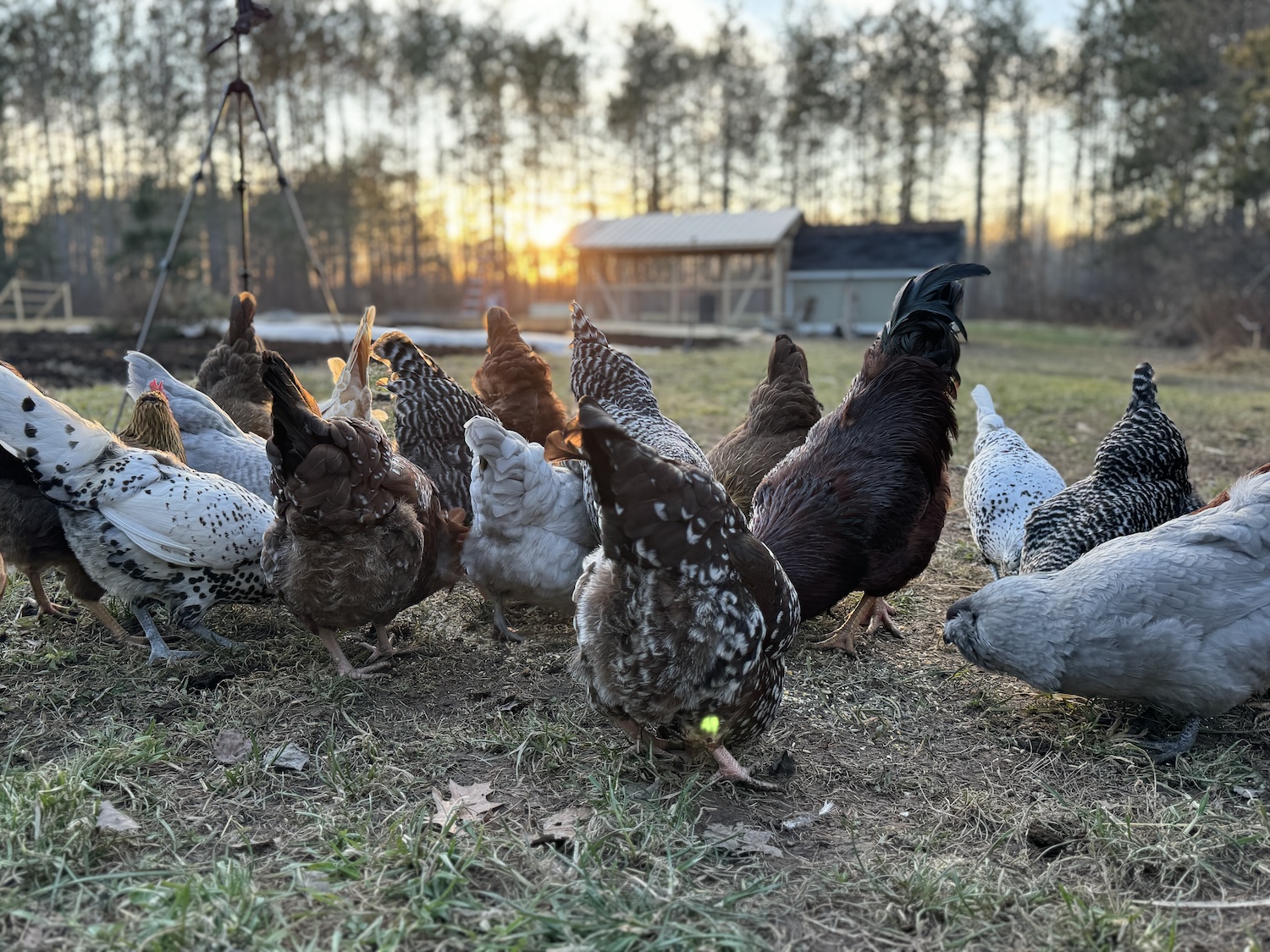
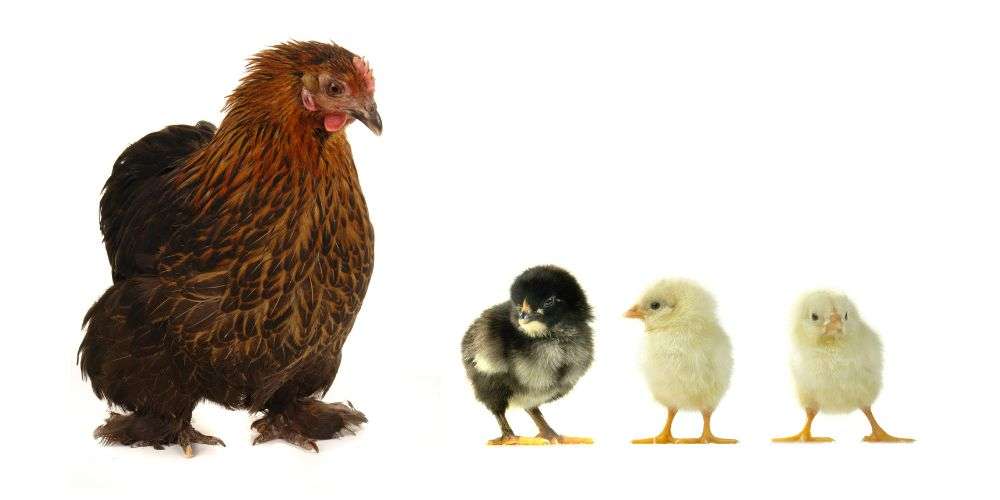
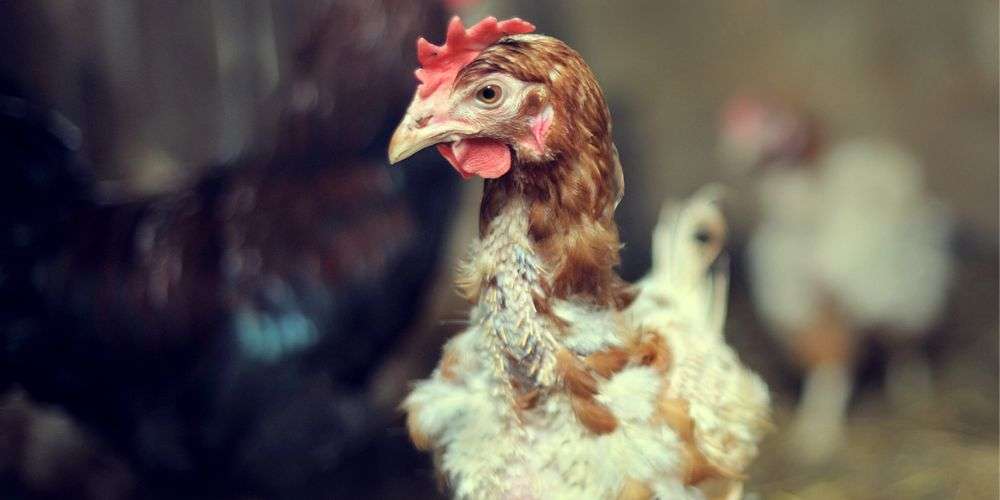
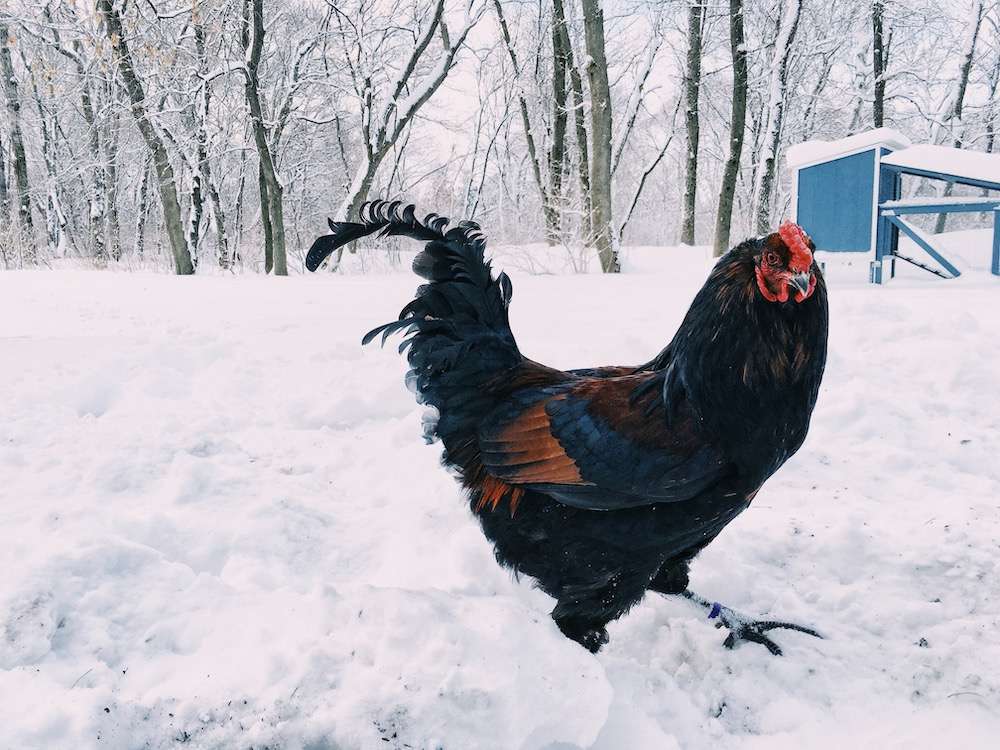
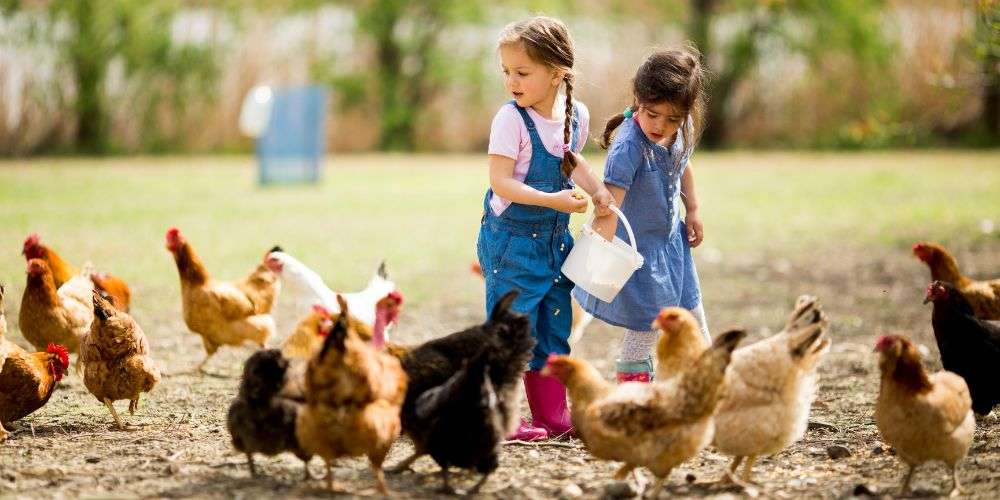


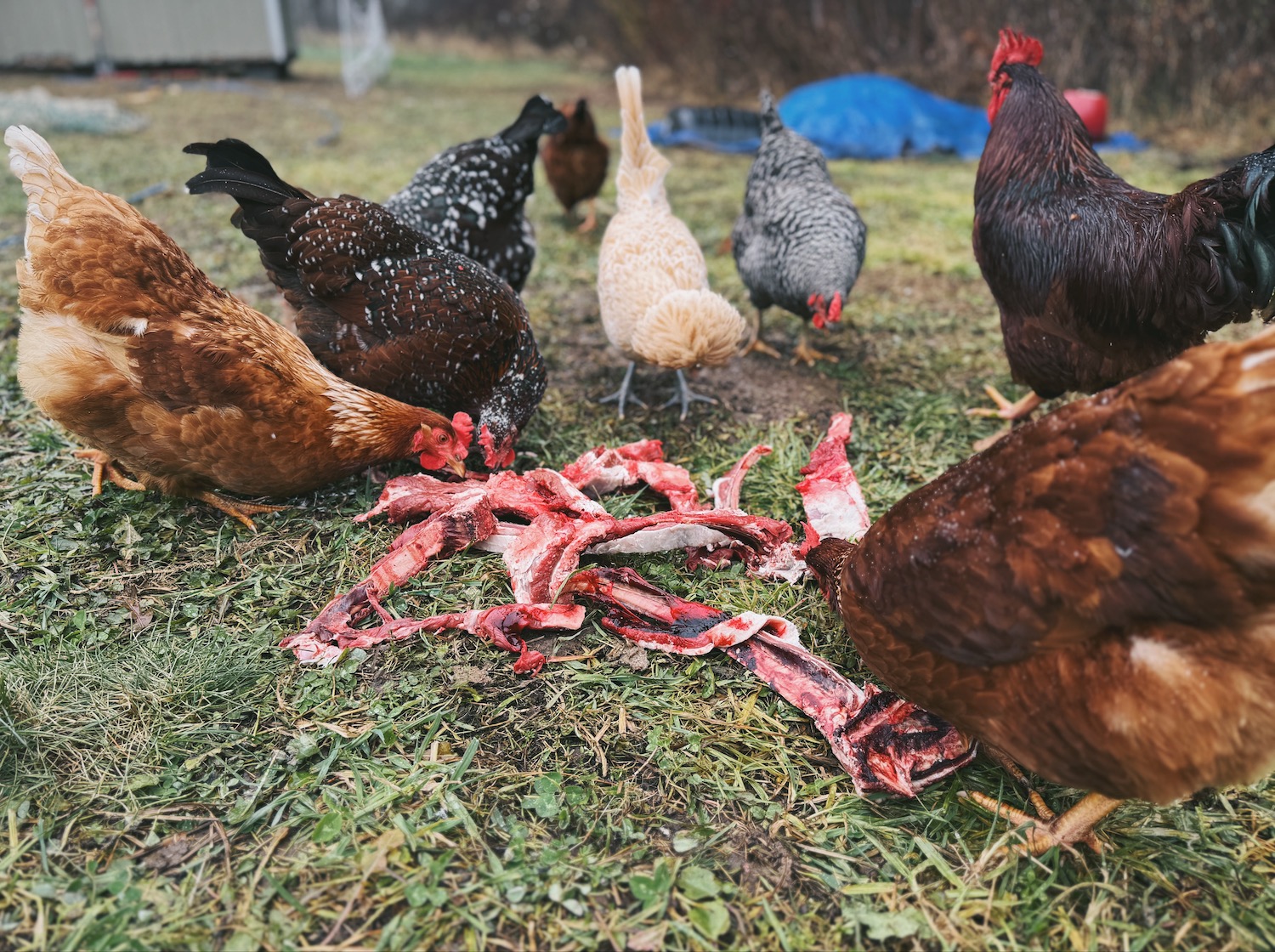

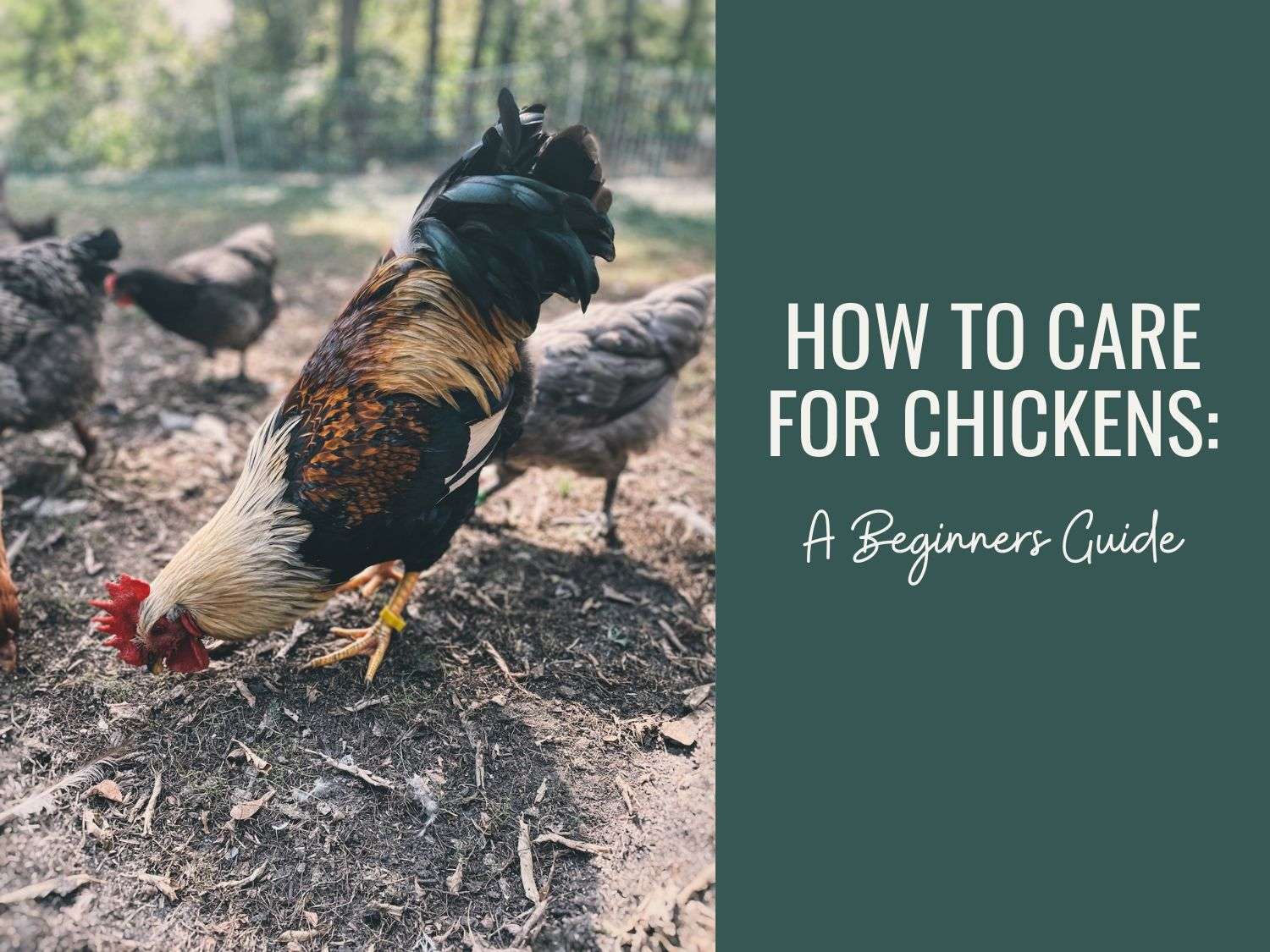


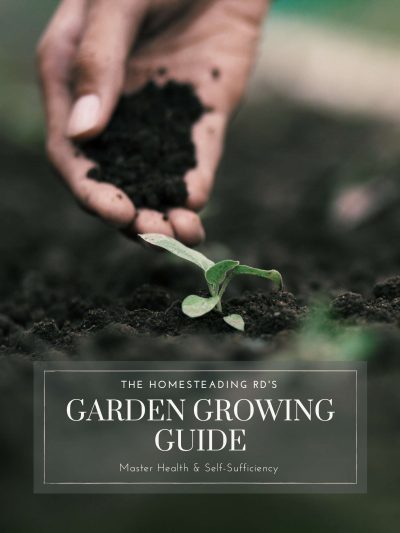
We are looking for a good layer feed. We can get one with not fish meal (yes, we did before, and yuck were the eggs as you mentioned!), but instead – crab meat. Would that taint the taste of eggs as well? or not?
Wow! I’ve never heard of a chicken feed using crab meat – that’s so cool! Crab meat is pretty mild in flavor, so I think it should be fine. Maybe start with 1 bag to test it out first!
We’re in the UK so you can’t feed chickens any table scraps or any animal proteins at all. Not even their own eggs back to them. The best source of legal protein here we’ve found is black soldier fly larvae. Or cacli worms they’re called. They’re about 18% crude protein but once you take out the water content it equates to 48% protein – and they’re full of calcium in the right calcium to phosphorus balance too. They’re also great for gut health and immunity. And you get planet-saving bragging rights too because they’re mega eco-friendly. But these are totally legal in the UK and we’re so happy we found them. They’ve made a big difference helping our girls get over a serious moult and they just love them! Go NUTS for them. You can buy them in the UK from https://www.econourish.co.uk. We have a subscription and we get them every two weeks but you can get them weekly or just as a one off but without the discount.
why is feeding them eggs illegal is that an esg thing, im in US
I use cat food as a supplemental treat.
If I have bacon grease or sausage grease I add dry cat food to it, then throw it to my hens as a supplemental treat. They are CRAZY about it!!!!!
I bet they LOVE that!
You are sooo generous of your knowledge and knom-how it is amasing. Thang you very much for your informative and concrete articles.
Johanne
You’re so welcome! 🙂
I never knew you could feed a chicken scrambled eggs and cat food. Interesting stuff!
and they LOVE it! 🙂
Very informative! Great read
I’m glad to hear you found it useful! 🙂
This is very interesting, we learn something new every day. I didn’t know there was so much involved in raising chickens. This is good to know.
They are pretty basic compared to most livestock, but definitely have a few needs to pay attention to!
Super interesting!
Definitely a fun topic!
My friend just gave me eggs from her coup, they were delicious. It has got me thinking about getting my own chickens. This was even more encouraging!
You definitely should! You won’t regret it 🙂
Woah, cat food for chickens? I never knew! Love to see a fellow RD using their health knowledge in an unconventional way! Great read 🙂
For sure! It’s not my favorite option, but it works in a pinch! 🙂
Who knew you could order worms on Amazon! Feeding Scrambled eggs to chicken feels kinda weird, but interesting to know. I knew when i raised chickens back home, they often shed their feathers, but had no idea that this process is called molting. As always, I enjoy reading your blog posts; it’s nostalgic and educational at the same time.
I had no idea either! Amazon to the rescue I suppose. haha! I’m glad to hear that you’re enjoying my posts 🙂 I really appreciate it!
Very informative!
I’m so glad to hear it!
Why are all the best ones soooooo gross?! 🙂 Just kidding, these are great ideas.
Lol!
My daughter is wanting to get some chickens this coming spring. This is great info! Bookmarking for future use. Thanks so much!
Excellent! You’re going to love having them around 🙂
Great information, thanks a lot for sharing! Especially the first part.. protein-deficiency manifestations! Didn’t know that before. Here, we rely mainly on grains and vegetable/fruit peels. Great to have other options! Love your blog btw 🙂 Keep it up!
You’re welcome! Protein is often forgotten about when giving extras to the chickens. I hope this helps!